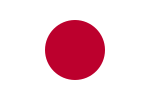|
Mass media in Japan
The mass media in Japan include numerous television and radio networks as well as newspapers and magazines in Japan. For the most part, television networks were established based on capital investments by existing radio networks. Variety shows, serial dramas, and news constitute a large percentage of Japanese evening shows. Western movies are also shown, many with a subchannel for English. There are all-English television channels on cable and satellite (with Japanese subtitles). Television networksThere are 6 nationwide television networks, as follows:
In addition, there is the Japanese Association of Independent Television Stations (JAITS), which consists of independent stations in the three major metropolitan areas (excluding Ibaraki, Shizuoka, and Osaka), and includes TV stations affiliated with the Chunichi Shimbun newspaper such as Tokyo MX and TV Kanagawa. Radio networksAM radio
FM radio
See alsoSocial mediaFacebook, Twitter, Instagram, and Line, are the leading used media platforms in the Japanese industry.[2] Line is an app used for instant communication on electronic devices. Statistics show that Facebook use in Japan is at 47.75%, X (formerly Twitter) use is at 19.33%, YouTube use is at 13.9%, Pinterest use is at 10.69%, Instagram use is at 4.93%, and Tumblr use is at 2.29%.[3] In Japan, as of 2017, nearly 100% of residents are online, smartphone use is reaching 80%, and some form of social media is being used by over half of the population.[4] MagazinesWeekly magazines
Monthly magazines
Manga magazinesNewspapersMajor papers
Regional papers
Other nationally known regional papers include Nishinippon Shimbun (西日本新聞) in Kyushu, Hokkaido Shimbun (北海道新聞) in Hokkaido, Chugoku Shimbun (中国新聞) in Chugoku. Specialty papersAmong niche newspapers are publications like the widely circulated Nikkan Kogyo Shimbun (The Business and Technology Daily News), or Shimbun Akahata, the daily organ of the Japanese Communist Party. Other niches include papers devoted entirely to predicting the results of horse races. One of the best-known papers in the genre is Keiba Book (競馬ブック). Shūkan Go (週刊碁) is a weekly newspaper that covers the results of professional Go tournaments and contains hints on Go strategy. As in other countries, surveys tend to show that the number of newspaper subscribers is declining, a trend which is expected to continue. Claims of media biasClaims of media bias in Japanese newspapers and the mainstream media in general are often seen on blogs and right-leaning Internet forums, where the "mass media" (masu-komi (abbreviation of mass communication) in Japanese) are often referred to as "mass garbage" (masu-gomi). S igns with this epithet were carried by demonstrators in Tokyo on 24 October 2010, at what was reportedly the first demonstration in Japan to be organized on Twitter.[6] Among the general public, the credibility of the press suffered after the Fukushima Daiichi Nuclear Power Plant crisis, when reporters failed to press government and industry sources for more information, and official reports turned out to be inaccurate or simply wrong.[7][8] Kazuo Hizumi, a journalist turned lawyer, details structural problems in his book, 「マスコミはなぜマスゴミと呼ばれるのか?」, "Masukomi wa naze masugomi to yobareru no ka?", ("Why is mass media called mass garbage?"), which argues that a complex network of institutions, such as elite bureaucrats, judiciary, education system, law enforcement, and large corporations, all of whom stand to gain from maintaining the status quo, shapes the mass media and communication in a way that controls Japanese politics and discourages critical thinking.[9] Key stations: television and radioIn Japan, there are five broadcasting stations which take the lead in the network of commercial broadcasting. The five stations are Nippon Television, Tokyo Broadcasting System, Fuji Television, TV Asahi, and TV Tokyo. Their head offices are in Tokyo, and they are called zaikyō kī kyoku (在京キー局, Key stations in Tokyo) or kī kyoku (キー局, Key stations). The key stations make news shows and entertainment programs, and wholesale them to local broadcasting stations through the networks. Although local broadcasting stations also manufacture programs, the usage of the key stations is very large, and 55.7% of the TV program total sales in the 2002 fiscal year (April 2002 to March 2003) were sold by the key stations. Furthermore, the networks are strongly connected with newspaper publishing companies, and they influence the media very strongly. For this reason, they are often criticized.[10] In addition, there is CS broadcasting and Internet distribution by the subsidiaries of the key stations. The definition of key station has changed a little in recent years. OutlineIn Japan, every broadcasting company (except NHK and Radio Nikkei) which performs terrestrial television broadcasts has an appointed broadcast region. In Article 2 of the Japanese Broadcasting Law (放送法), the Ministry of Internal Affairs and Communications defines the fixed zone where the broadcast of the same program for every classification of broadcast is simultaneously receivable. So, the broadcasting company constructs a network with other regions, and with this network establishes the exchange of news or programs. The broadcasting companies which send out many programs to these networks are called key stations. Presently the broadcasting stations located in Tokyo send out the programs for the whole country. However, although Tokyo MX is in the Tokyo region, it is only a Tokyo region UHF independent station. Broadcasting stations in Nagoya and other areas are older than those in Tokyo. However, in order to meet the large costs of making programs key stations were established in Tokyo to sell programs nationwide. Some local stations have a higher profit ratio since they can merely buy programs from the networks. Sub-key stationsSince the broadcasting stations which assign the head offices in Kansai region (especially in Osaka) have a program supply frame at prime time etc. and sent out many programs subsequently to kī kyoku, they are called jun kī kyoku (準キー局,sub-key stations). List of key stationsAdvertising agencies
Wire services
See alsoReferences
Further reading
External links
|
